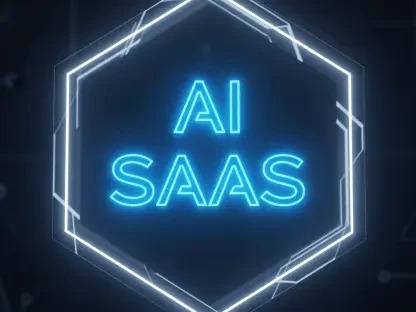Setting the Stage for a Writing Revolution
Imagine a world where every written word, whether in a student essay or a corporate report, is polished to perfection with minimal effort. In today’s fast-paced digital landscape, the demand for flawless communication has never been higher, with over 30 million daily active users relying on writing assistance tools to bridge the gap between intent and expression. This surge underscores a critical need for innovation in how technology supports writing, especially as artificial intelligence reshapes productivity. Grammarly, a leader in this space, stands at the forefront, merging advanced AI with intuitive design to transform the writing experience for students and professionals alike.
The writing assistance industry has evolved into a cornerstone of both educational and professional environments, driven by the necessity for clear and effective communication. As remote work and online learning continue to dominate, tools that enhance writing quality have become indispensable, catering to a diverse user base seeking efficiency and precision. Grammarly’s role in this ecosystem is pivotal, as it not only addresses grammatical accuracy but also reimagines the entire process of content creation through technological advancements.
This report delves into how Grammarly is setting new standards in the industry by integrating cutting-edge AI capabilities and user-centric design. By examining its latest innovations, ethical considerations, and strategic moves, the analysis aims to uncover the broader implications for the future of writing tools. The focus remains on understanding how these developments align with industry trends and regulatory landscapes, offering a comprehensive view of Grammarly’s impact.
The Evolution of Writing Assistance Tools
The writing assistance sector has witnessed remarkable growth, becoming an integral part of academic institutions and corporate settings. With the rise of digital communication, the need for tools that ensure clarity and professionalism has propelled the industry forward, supporting millions of users in crafting error-free content. This expansion reflects a broader societal shift toward valuing efficiency in written expression across various domains.
Key players like Grammarly have capitalized on this trend by incorporating artificial intelligence to elevate their offerings beyond basic spell-checking. The market has seen a notable pivot toward AI-driven solutions that provide contextual suggestions and tone adjustments, catering to nuanced user needs. Alongside AI integration, design plays a crucial role in user engagement, with platforms prioritizing intuitive interfaces to ensure accessibility for both novice and expert users.
As competition intensifies, companies are compelled to innovate continuously, blending functionality with aesthetic appeal to retain user loyalty. Grammarly’s approach exemplifies this balance, setting a benchmark for how technology and design can converge to enhance productivity. This dynamic environment signals a future where writing tools are not just aids but essential components of daily communication workflows.
Grammarly’s Latest Innovations
Redesigning the User Experience
Grammarly has unveiled a transformative document-based interface, drawing inspiration from collaborative platforms like Coda, which it acquired to bolster its design capabilities. This new framework embraces a block-first approach, enabling users to seamlessly integrate diverse elements such as tables, lists, and rich text blocks into their documents. Such flexibility empowers content creators to structure their work dynamically, catering to varied formats and purposes with ease.
Complementing this redesign is a sidebar-hosted AI assistant that enhances navigation and usability. This feature offers text summarization, answers specific queries, and delivers personalized writing suggestions, streamlining the creative process. By positioning these tools within easy reach, Grammarly ensures that users can focus on their ideas without being bogged down by technical complexities.
The emphasis on user experience through design reflects a deeper understanding of how visual and functional elements influence productivity. This overhaul not only makes the platform more approachable but also positions it as a versatile tool for diverse writing tasks. The result is a workspace that feels both modern and intuitive, meeting the evolving expectations of a tech-savvy audience.
AI-Powered Features for Diverse Needs
Grammarly’s suite of AI-driven tools addresses a wide array of writing challenges, tailoring support to individual user requirements. Features like “Reader Reactions” provide feedback based on specific audience personas, while “Grader” assesses content against academic guidelines and public materials. Additionally, “Citation Finder” aids in sourcing references, and “Paraphraser” adjusts tone to align with user intent, ensuring adaptability across contexts.
Beyond content creation, Grammarly has introduced agents to detect plagiarism and AI-generated text, though their accuracy remains a work in progress. The primary goal of these tools is to guide users, particularly students, by flagging potential issues for review before submission, rather than acting as strict enforcers. This approach underscores a commitment to education over punishment, fostering a learning mindset among users.
These innovations highlight Grammarly’s dedication to personalization, ensuring that each feature serves a distinct purpose in the writing journey. By addressing both creative and ethical dimensions, the platform equips users with resources to produce authentic, high-quality work. This comprehensive support system sets a new standard for what writing assistance can achieve in a digital age.
Balancing Innovation with Ethical Challenges
Grammarly’s dual role in promoting AI-assisted writing while offering detection tools for such content presents a unique ethical conundrum. On one hand, it empowers users to leverage technology for enhanced productivity; on the other, it seeks to maintain integrity by identifying AI-generated material. This balancing act raises questions about the boundaries of assistance versus authenticity in academic and professional settings.
The company addresses these concerns by framing responsible AI use as a moral imperative, particularly in preparing students for future workforce demands. By educating users on the ethical implications of AI tools, Grammarly aims to cultivate a culture of transparency and accountability. This stance reflects a broader recognition that technology must be wielded with caution to preserve trust and credibility in written communication.
Navigating this complex landscape requires a nuanced approach, ensuring that innovation does not compromise core values. Grammarly’s efforts to integrate ethical guidelines into its platform demonstrate a proactive response to potential misuse. This focus on responsibility could serve as a model for other tech entities grappling with similar dilemmas in an AI-driven world.
Industry Context and Regulatory Considerations
The tech industry is experiencing a profound shift toward embedding AI in productivity tools, with Grammarly aligning itself through strategic acquisitions like that of Superhuman, an email client. This move signals an intent to broaden its ecosystem, integrating AI agents across various communication platforms. Such trends illustrate a collective push among tech firms to enhance user experiences through intelligent automation.
Regulatory concerns surrounding AI ethics, data privacy, and content authenticity pose significant challenges for writing platforms. As AI tools become more pervasive, questions arise about how user data is handled and whether automated content undermines original thought. Grammarly navigates these issues by prioritizing transparency and user control, aiming to build trust in an era of heightened scrutiny over digital practices.
Looking ahead, the regulatory landscape may evolve to impose stricter guidelines on AI integration in productivity software. Grammarly’s proactive stance on ethical considerations positions it favorably to adapt to such changes, potentially influencing industry standards. This alignment with emerging norms underscores the importance of foresight in maintaining a competitive edge amid growing oversight.
The Future of Writing Tools with Grammarly
Grammarly’s trajectory suggests a future where AI integration in writing tools becomes even more expansive, potentially incorporating features like real-time collaboration and advanced predictive text. With a focus on enhancing user productivity, the platform may explore deeper personalization, tailoring suggestions to individual writing styles over time. This direction aligns with user expectations for tools that anticipate needs with minimal input.
Strategic initiatives, such as the $1 billion funding round led by General Catalyst, provide Grammarly with the resources to drive innovation and market expansion. This financial backing, coupled with acquisitions, strengthens its position to pioneer new functionalities and integrations. The emphasis on growth indicates a vision that extends beyond writing assistance into broader productivity solutions.
As the industry evolves, Grammarly’s ability to anticipate market shifts will be crucial in sustaining leadership. The potential to shape how AI and design intersect in everyday tools offers a glimpse into a landscape where technology seamlessly supports human creativity. This forward-looking approach could redefine standards for user engagement and efficiency in the years ahead.
Final Reflections and Path Forward
Looking back, Grammarly’s journey through 2025 showcased a remarkable blend of AI innovation and design excellence that redefined writing for countless users. The platform’s commitment to enhancing productivity while addressing ethical challenges set a precedent for responsible technology deployment. Each update and strategic decision reflected a deep understanding of user needs and industry dynamics.
Moving forward, stakeholders should consider how to further integrate ethical frameworks into AI tools, ensuring that innovation supports authenticity rather than undermining it. Grammarly’s model offers a blueprint for balancing advancement with accountability, suggesting a path where technology amplifies human potential responsibly. Collaboration between industry leaders and regulators could be the next step to establish universal guidelines.
Ultimately, the focus should shift toward empowering users with education on AI’s role in writing, fostering a mindset of critical engagement. Grammarly’s influence in this space highlighted the possibility of tools that not only correct but also inspire. The challenge ahead lies in scaling these insights to create a future where technology and ethics coexist harmoniously in every written word.









